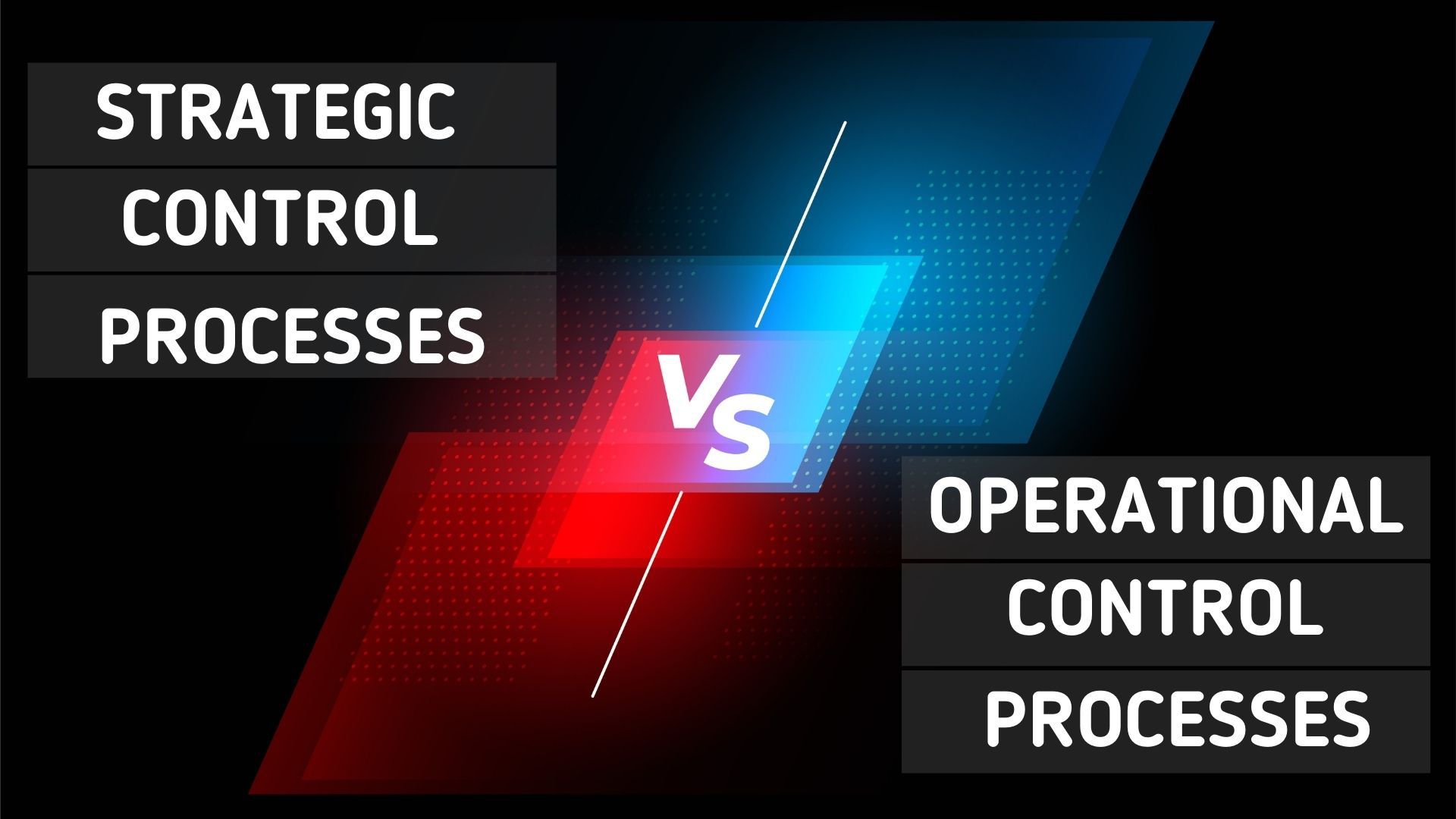Strategic control is defined as finding different methods to implement the strategic plan. It is unique to handle and intends to handle the unknown and track the strategic implementation and its results. It is primarily concerned with finding and assisting you in adapting to different factors, including internal or external factors.
The primary objective of strategic control is to ensure that organization has an effective balance and alignment with its internal and external environment. This is very important when it comes to moving forward towards achieving strategic goals.
After a strategy is confirmed, it is to be implemented over a long time to guide the organization and adapt to the internal and external environment. These strategies are usually based on management’s assumptions about different events that have not yet taken place. They are futuristic or forward-looking in nature.
The strategic control is concerned primarily with tracking the strategy as it is being implemented. It detects any problems or implements necessary changes that are necessary to make adjustments.
Table of Contents
Types of strategy control
There are primarily four different types of strategic controls, which are as follows:
1. Premise control
Strategies are usually founded on certain assumptions about the forces and factors which affect the organization. These factors include internal factors like the employees, profitability, product, etc. And external factors like customers, shareholders, competition, nature, etc. Some of these forces are very sharp, and any deviation in them affects the strategy greatly.
Therefore premise control is necessary to identify and keep track of all those changes to be assessed. The objective is to assess their impact on strategy and its implementation in the organization.
There could be many factors like changing government policies, rising or decreasing market competition, changes due to killer virus in the market, or natural and unforeseen calamities.
Therefore, premise control is used to continually test all these assumptions and determine if they are valid or they need to be modified. This helps the strategy farmers to implement necessary and corrective action at the right time rather than just being with a particular strategy for a long time.
Usually, the corporate planning department’s job is to exert premise control and identify the primary assumptions by regularly checking their validity.
2. Implementation control
When the strategy is chosen, it has to be implemented, and that is a prerequisite to have an optimum number of programs, plans, and projects. The entire purpose of implementation control is to confirm and ascertain that these programs and projects help the organization achieve its goals.
If it is seen that the commitment of resources has a predefined plan or a program is not getting as many results as expected, then a matching revision should be done. Therefore, implementation control is nothing but strategic rethinking to avoid different wastes.
One way of implementing control is to identify and monitor different throb points like confirming new product marketing’s success after the pre-test phase. This also involves checking the feasibility of the diversification program after initial attempts at searching technological association.
In the first scenario, the company should evaluate and analyze if the new product launch will benefit or be dropped forever for another program. In the second scenario, implementation control is used to confirm if the diversification move will be successful or not.
Milestone review is another tool of implementation control. This involves a critical review of the essential points in strategic implementation. This is very similar to the identification of activities and events in the CPM network or PERT.
After these milestones are identified, a detailed and in-depth review of implementation is made to reconfirm its relevance to 18 different objectives.
3. Strategic surveillance
Strategic surveillance is more generalized than the premise and implementation controls, which are more specific by nature. Strategic surveillance aims to monitor a wide range of events both outside and inside the organization.
They usually are the ones who threaten the strategy of the company. Such strategic surveillance can be performed by a broad-based and general monitoring based on different selected information sources. The objective is to uncover events that are likely to affect the organizational strategy.
4. Special Alert control
This is a special alert based on an immediate reassessment of the strategy when an unexpected event hits and stops it. This special alert can be implemented by formulating contingency strategies and assigning different responsibilities for unforeseen events.
These incidences can be unexpected events like pandemic outbreaks, sudden change or fall of government at Centre or state, industrial disaster, terrorist attack or unforeseen natural calamity like floods, fire, earthquake, etc.
Difference between strategic and operational control processes
Operational control monitors everyday functions to address any problem at the earliest. On the other hand, strategic controls require a large amount of data and an extended timeframe. Operational control can be automated, or it can also be manual. It usually involves technology, people, and processes. Operational controls, when successful, flag potential risks and identify problems between planning and action. They are useful in implementing changes so that you can stay on course with your strategy.
When the machine runs into technical problems or when the performance is not as expected, the operation control process initiates a course correction at the earliest. This may include changing or updating the IT system, retraining employees who handle the machine, or any such solution. Process control usually triggers when a factory produces a particular set of products and drops below expectation or an increase in error rate.
Steps of strategy control process
Whether you are using one or all of the techniques of strategic evaluation, they necessarily involve the following six steps:
1. Determine what to control
Consider the goals of the organization. The elements should be related to your vision and mission. It may not be an easy task, but you should prioritize what to control because it is impossible to monitor and control everything. Selectively determine what to control.
2. Set standards
You should have something to compare your performance with. Whether in their future, present, and past, managers must compare actions against a set standard.
This can be qualitative or quantitative, but it should help you determine your goals and evaluate the nature of your progress.
3. Measure performance
Now that the standards are set, The next step is to measure your performance. It is important to measure your performance because it will help you determine your strategy’s progress. This measurement can be done in regular meetings which are carried out in the company.
Questions like what is happening, the standards, and whether they are being met are to be answered in such meetings.
4. Compare performances
When you compare standards or targets, you should perform competitive benchmarking. It will help you to determine the gaps in actuals and targets.
5. Analyze deviations, if any
There could be multiple deviations in your strategy implementation. You must analyze these performance standards and determine the cause if they go below the expected standards.
This step essentially focuses on understanding what the causes of deviation are. This also analyses internal issues such as shortages of resources.
6. Corrective action
It is important to determine if corrective action is needed or not. Once you have determined the reason for performance deviation, decide what to do about it. Determine if the goals should be adjusted or something you can do internally, which will sort the issue.
It was entirely dependent on each deviation’s cause, which will help you determine if you will take a corrective performance or revise the existing standard or take no action at all.
Strategic control contribution
When strategic control is undertaken correctly, there are three primary areas in which it contributes. These areas are as follows:
- Measurement of progress
- Feedback for future actions
- Linking rewards and recognitions with performances
1. Progress measurement
Organizational progress can be measured with the help of strategic control. The measurement is done towards the achievement of corporate objectives. The likely outcome is determined whenever a strategy is chosen and implemented.
The most likely objectives expected out of the strategy and reserved for organizational objectives are determined. Although the strategy is not an end, it is a means to achieve something much more important for its success.
This is why measurement of the result is essential for strategy implementation. This should be measured when the implementation process is being undertaken and after the implementation is completed. This will ensure that corrective actions, if any, can be taken at the earliest.
2. Feedback for future actions
Strategic management is a continuous process. There is no predefined end or a beginning to it, so strategic control helps recycle different actions. These actions are relevant for achieving the organizational objectives.
This can be possible only when strategic control and strategic planning are very well integrated.
Therefore, controlled activities are usually considered when a strategic plan sets a criterion. Strategic control helps provide inputs for adjusting the same strategy plan and evaluating the future course of action.
3. Linking rewards and recognition with performance
Many organizations follow the first and second steps correctly, but it is in the third step that they fail. They fail to link rewards and recognitions to performance.
This not only happens department wise but at a whole country level as well. This linking of rewards to performance is more crucial than anything else for the employee, and it goes a long way in employee retention.
Companies have to understand that to get a high market share, they need to have good employees, and having good employees is one thing but maintaining them is a different thing altogether. A performance-based reward system considers the performance of the employee rather than any other factors and reduces biases.
Conclusion
Strategic controls are like a steering wheel, which goes a long way in navigating an organization. It leads the company to achieve its vision and mission and long term goals. Once a strategy is decided, it is implemented and worked upon, adapting to changes in the internal and external environment. The strategies are objectives of the organization, and they are forward-looking.
They are concerned with following up with the strategy and making necessary adjustments if required. Strategic control ensures a smoother transition of the organization from the existing stage to achieving its long-term goals.
Liked this post? Check out the complete series on Strategy



Dear Mr. Bhasin,
Thank you for posting such informative articles I am eternally grateful for the same. Please include a way to share these articles on what’s up for student groups.
Thank you,
Abhijit Dey